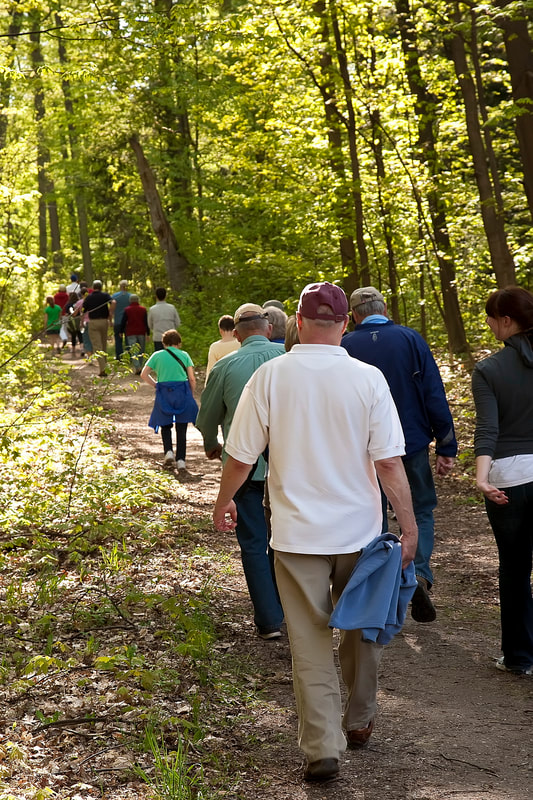Elk Rapids Almanac: April 2019
April 27 - A NATURE HIKE WITH GREEN ELK RAPIDS & ELK RAPIDS DiSTRICT LIBRARY
Maple Bay Farm and Nature Preserve.
Spring weather inspires us to get outdoors and enjoy nature. It’s good for us!
Increasingly science is confirming what we have known all along. Author Richard Louv, author, journalist and previous Green Elk Rapids guest speaker, describes at length in Last Child In The Woods the benefits that nature has for our children. Increasingly, pediatricians are writing prescriptions for children to spend time in their neighborhood parks. Researcher David Strayer, University of Utah, says “now we are seeing changes in the brain and changes in the body that suggest we are physically and mentally more healthy when we interact with nature”.
Author and academic Jill Suttie writes that nature has a profound impact on our brain, our behavior, and general well being by increasing our attention capacity, promoting creativity, and enhancing our ability to connect with other people.
In summary:
-Being in nature decreases stress.
-Nature makes you happier and less brooding.
-Nature relieves attention fatigue and increases creativity.
-Nature may help you to be more kind and generous.
-Nature makes you “feel more alive”.
The community is invited to join us and experience all of the above!
April 27 - A NATURE HIKE WITH GREEN ELK RAPIDS & ELK RAPIDS DiSTRICT LIBRARY
Maple Bay Farm and Nature Preserve.
Spring weather inspires us to get outdoors and enjoy nature. It’s good for us!
Increasingly science is confirming what we have known all along. Author Richard Louv, author, journalist and previous Green Elk Rapids guest speaker, describes at length in Last Child In The Woods the benefits that nature has for our children. Increasingly, pediatricians are writing prescriptions for children to spend time in their neighborhood parks. Researcher David Strayer, University of Utah, says “now we are seeing changes in the brain and changes in the body that suggest we are physically and mentally more healthy when we interact with nature”.
Author and academic Jill Suttie writes that nature has a profound impact on our brain, our behavior, and general well being by increasing our attention capacity, promoting creativity, and enhancing our ability to connect with other people.
In summary:
-Being in nature decreases stress.
-Nature makes you happier and less brooding.
-Nature relieves attention fatigue and increases creativity.
-Nature may help you to be more kind and generous.
-Nature makes you “feel more alive”.
The community is invited to join us and experience all of the above!
Hikers enjoying time spent in nature with GreenER. Photo: Dana Vanoy

